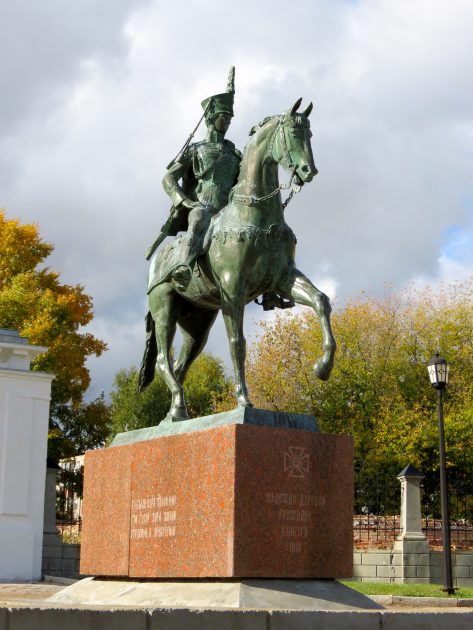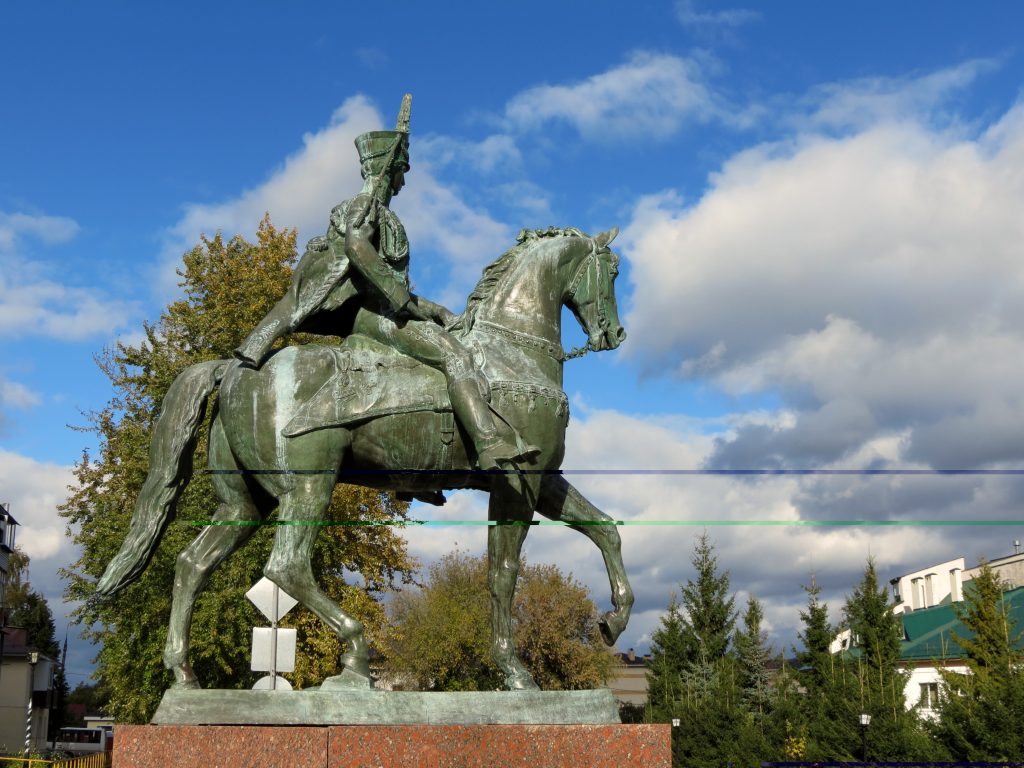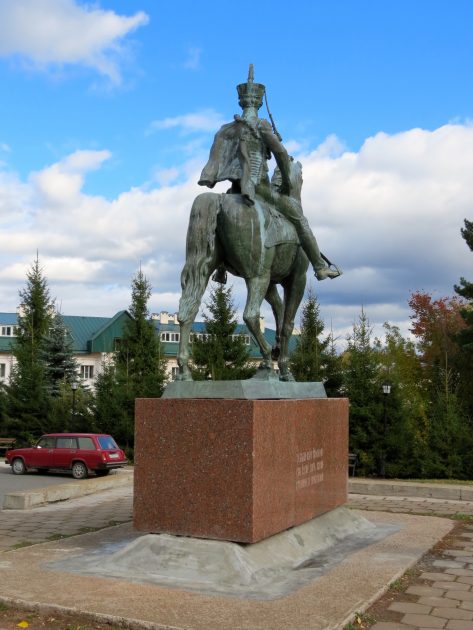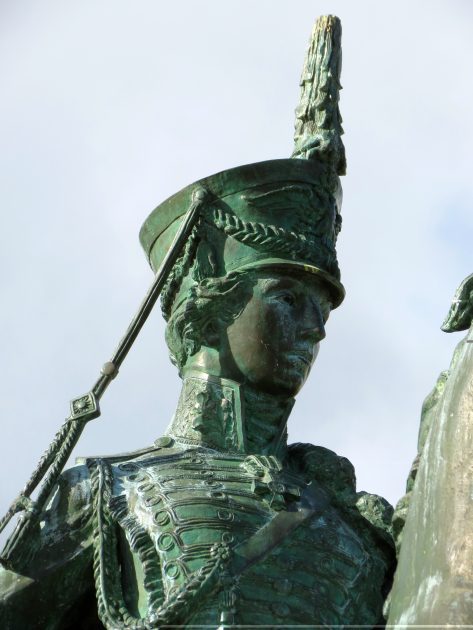- CountryRussia
- Town:Yelabuga
-
Year of creation:1993
- Rider(s):Durova, Nadezhda
Nadezhda Andreyevna Durova (1783 –1866), also known as Alexander Durov, Alexander Sokolov and Alexander Andreevich Alexandrov, was a woman who, while disguised as a man, became a decorated soldier in the Russian cavalry during the Napoleonic wars. She was the first known female officer in the Russian military. Her memoir, The Cavalry Maiden, is a significant document of its era because few junior officers of the Napoleonic wars published their experiences, and because it is one of the earliest autobiographies in the Russian language.
Nadezhda Durova was born in an army camp at Kiev, the daughter of a Russian major. Her father placed her in the care of his soldiers after an incident that nearly killed her in infancy when her abusive mother threw her out the window of a moving carriage. As a small child, Durova learned all the standard marching commands and her favorite toy was an unloaded gun.
After her father retired from service, she continued playing with broken sabers and frightened her family by secretly taming a stallion that they considered unbreakable. In 1801, she married a Sarapul judge V.S. Chernov and gave birth to a son in 1803. Some accounts claim that she ran away from her home with a Cossack officer in 1805. In 1807, at the age of twenty-four she disguised herself as a boy, deserted her son and husband, and bringing her horse Alkid, enlisted in the Polish Horse Regiment under the alias Alexander Sokolov.
Durova was fiercely patriotic and considered army life to be freedom. She enjoyed animals and the outdoors. She felt she had little talent for traditional women’s work. In her memoirs, she described an unhappy relationship with her mother, warmth toward her father, and nothing at all about her own married life.
She fought in the major Russian engagements of the 1806-1807 Prussian campaign. During two of those battles, she saved the lives of two fellow Russian soldiers. The first was an enlisted man who fell off his horse on the battlefield and suffered a concussion. She gave him first aid under heavy fire and brought him to safety as the army retreated around them. The second was an officer, unhorsed but uninjured. Three French dragoons were closing on him. She couched her lance and scattered the enemy. Then, against regulations, she let the officer borrow her own horse to hasten his retreat, which left her more vulnerable to attack.
During the campaign, she wrote a letter to her family explaining her disappearance. They used their connections in a desperate attempt to locate her. The rumor of an amazon in the army reached Tsar Alexander I, who took a personal interest. Durova’s chain of command reported that her courage was peerless. Summoned to the palace at St. Petersburg, she impressed the Tsar so much that he awarded her the Cross of St. George and promoted her to lieutenant in a hussarunit (Mariupol Hussar Regiment). The story that there was the heroine in the army with the name Alexander Sokolov had become well known by that time. So the Tsar awarded her a new pseudonym, Alexandrov, based on his own name.
Durova’s youthful appearance hurt her chances for promotion. In an era when Russian officers were expected to grow a mustache she looked like a boy of sixteen. She transferred away from the hussars to the Lithuanian Uhlan Regiment in order to avoid the colonel’s daughter who had fallen in love with her. Durova saw action again during Napoleon’s invasion of Russia in 1812. She fought in the Battle of Smolensk. During the Battle of Borodino a cannonball wounded her in the leg, yet she continued serving full duty for several days afterward until her command ordered her away to recuperate. She retired from the army in 1816 with the rank of stabs-rotmistr, the equivalent of captain-lieutenant.
A chance meeting introduced her to Aleksandr Pushkin some twenty years later. When he learned that she had kept a journal during her army service he encouraged her to publish it as a memoir. She added background about her early childhood but changed her age by seven years and eliminated all reference to her marriage. Durova published this as The Cavalry Maiden in 1836. Durova also wrote five other novels. Durova continued to wear male clothing for the rest of her life. She died in Yelabuga and was buried with full military honors.
- Sculptor(s):Lyakh, Fyodor
Just behind the statue of Nadezhda Durova is the abandoned Troitskoe (Trinity) Cemetery. The cemetery served as the final resting place for many of Yelabuga’s merchant families including the Shishkins and the Stakheevs, but more famously the grave of Nadezhda Durova is also found here. Durova’s original grave was destroyed when the cemetery was closed in the 1930s, but a replacement has since been made which states “Here lies Russia’s Joan of Arc”. The cemetery’s Holy Trinity Church was also destroyed when the cemetery was closed and only its foundations can be seen today.


















